#mariana of austria
Text

7 notes
·
View notes
Photo

Spanish School, 17th Century
Portrait of Mariana of Austria, Queen Consort of Spain (1634–1696)
#spanish art#spain#spanish#european art#royalty#mariana of austria#queen consort of spain#female portrait#caucasian#woman#european history#western civilization#austria#europe#european#oil painting#art#traditional art#1600s#fashion
105 notes
·
View notes
Text
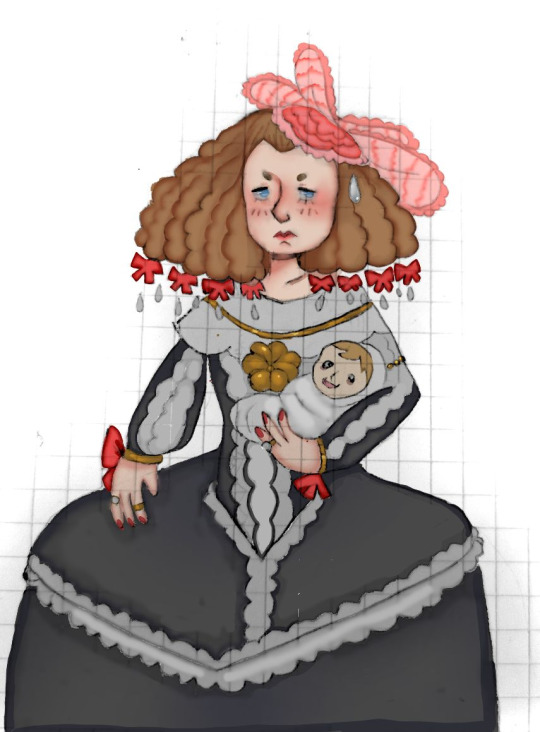
Mariana of Austria and her son Carlos.
Ugly since birth
also her clothing slays
10 notes
·
View notes
Text

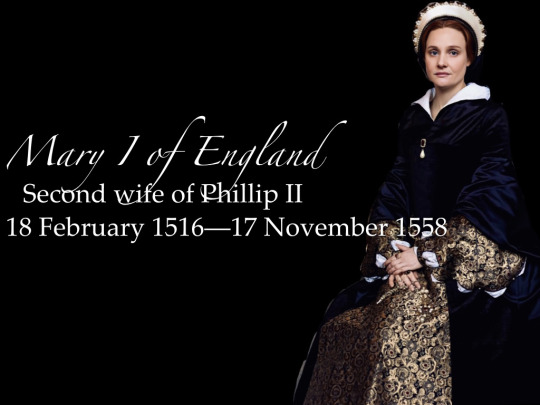




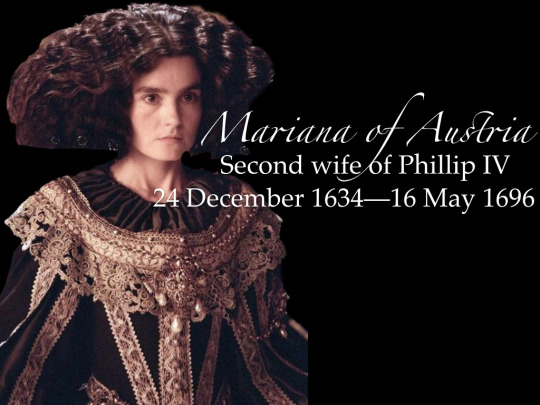

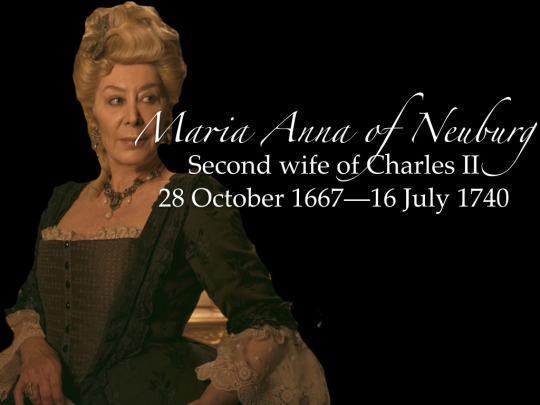
Spanish consorts of the House of Habsburg
(requested by anonymous)
#mine#my edit#history#spanish history#house of habsburg#habsburg family#isabella of portugal#mary i#elisabeth of valois#anna of austria#margaret of austria#elisabeth of france#mariana of austria#marie louise d’orléans#maria anna of neuberg#request
40 notes
·
View notes
Text
Cause they have Dragons!

#house of the dragon episode 4 spoilers#house of the dragon memes#game of thrones memes#game of thrones#house of the dragon spoilers#house of the dragon#princess rhaenyra#princess rhaenys targaryen#daemon targaryen#mariana of austria#philip iv of spain#viserys targaryen#milly alcock#matt smith
44 notes
·
View notes
Text

Austrias: Endogamia
#my art#mira it's gotten me 1k twitter likes i might as well post it here#habsburg#felipe iv#carlos ii#felipe ii#charles v#margarita maria#maria teresa#mariana de austria#margarita de austria#felipe iii#felipe prospero#baltasar carlos#don carlos prince of asturias
92 notes
·
View notes
Photo

Retrato orante de Da. Mariana de Austria
by Diego Velázquez (Sevillian, 1599 – 1660)
oil on canvas (147 × 209 cm), 1655
Museo del Prado
#737613337103351808/Y3jtQIrV#Diego Velázquez#House of Habsburg#Mariana de Austria#Monarquía Hispánica#Spain#17th century#1655#Baroque#Museo del Prado#portraits#oil on canvas#paintings
10 notes
·
View notes
Text

Same-sex marriage in 2003 vs. 2013 vs. 2023
(20 years of change)
More info below:
----
2003:
Marriage : Netherlands, Belgium, British Columbia (CA), Ontario (CA)
Civil unions : France (including overseas territories), Germany, Denmark, Iceland, Sweden, Norway, Finland, Greenland, Rio Negro (AR), Ciudad de Buenos Aires (AR), California (US), New York (US), Hawaii (US), Vermont (US), Canary Islands (ES), Aragon (ES), Catalonia (ES), Andalusia (ES), Extremadura (ES), Castilla-La Mancha (ES), Castilla-Leon (ES), Madrid (ES), Valencia (ES), Asturias (ES), Basque Country (ES), Navarre (ES), Balearics (ES), Quebec (CA), Alberta (CA), Manitoba (CA), Nova Scotia (CA), Geneva (CH), Zurich (CH), Portugal.
----
2013:
Marriage : Netherlands, Belgium, Canada, Brazil, Uruguay, Argentina, South Africa, Spain, Portugal, France (including overseas territories), Denmark, Norway, Sweden, Iceland, New Zealand, Washington (US), California (US), New Mexico (US), Minnesota (US), Iowa (US), Maryland (US), DC (US), New Jersey (US), Delaware (US), New York (US), Connecticut (US), Rhode Island (US), Vermont (US), Massachusetts (US), New Hampshire (US), Maine (US), Hawaii (US), Mexico City (MX), Quintana Roo (MX).
Civil unions : Greenland, Colombia, Ecuador, Merida (VZ), United Kingdom, Ireland, Germany, Czech Republic, Austria, Finland, Hungary, Slovenia, Croatia, Switzerland, Luxembourg, Liechtenstein, Australia
Recognizes marriages performed abroad : All 32 Mexican states and Israel
----
2023:
Marriage : Netherlands (including overseas territories), Belgium, United States, Canada, Mexico, Costa Rica, Cuba, Puerto Rico, Colombia, US Virgin Islands, Ecuador, Brazil, Argentina, Uruguay, Chile, Malvinas/Falklands, France (including overseas territories), Spain, Portugal, Andorra, Germany, Slovenia, Switzerland, Austria, Malta, Guernsey, Jersey, United Kingdom, Isle of Man, Ireland, Gibraltar, Norway, Denmark, Sweden, Finland, Iceland, Greenland, Luxembourg, Faroe Islands, South Africa, Australia, New Zealand, Taiwan, Northern Mariana Islands, Guam, St. Helena, Pitcairn Islands, Gibraltar.
Civil unions : Bolivia, Italy, Cayman Islands, Bermuda, Aruba, Curaçao, Czech Republic, Hungary, Croatia, Montenegro, Greece, Cyprus, Estonia, Liechtenstein
Recognizes marriages performed abroad : Namibia, Israel, Nepal, American Samoa
----
Future :
Same-sex marriage is under consideration by the legislature or the courts in Aruba, Curaçao, the Czech Republic, Estonia, Greece, India, Japan, Liechtenstein, Namibia, the Navajo Nation, Nepal, Thailand, and Venezuela, and all countries bound by the Inter-American Court of Human Rights (IACHR), which includes Barbados, Bolivia, Dominican Republic, El Salvador, Guatemala, Haiti, Honduras, Nicaragua, Panama, Paraguay, Peru, and Suriname.
Civil unions are being considered in a number of countries, including Lithuania, Peru, the Philippines, South Korea, Ukraine, China, Hong Kong, Japan, Latvia, Panama, Romania, Serbia, Slovakia, Thailand, and Venezuela.
----
#map#maps#cartography#usa#latin america#mexico#data#americas#geography#europe#gay#lgbt#gay marriage#lgbtq#lgbtq history#lgbt history#history#lesbian#sapphic#marriage#pride
7K notes
·
View notes
Text
La Basílica de Absam y su virgen milagrosa
La Basílica de Absam y su virgen milagrosa
En el año de 1797, Rosina Buecher, vio como la Virgen María se apareció en uno de los cristales de la ventana de su casa, justo al lado suyo.
(more…)

View On WordPress
#Apariciones de la Santísima Virgen#Apariciones de la Virgen María#Apariciones marianas#La basílica de Absam#La Virgen de Absam Austria#santuarios Marianos#unpasoaldia
0 notes
Text
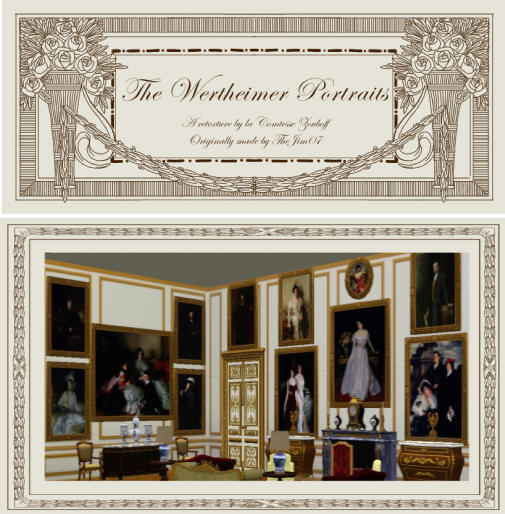
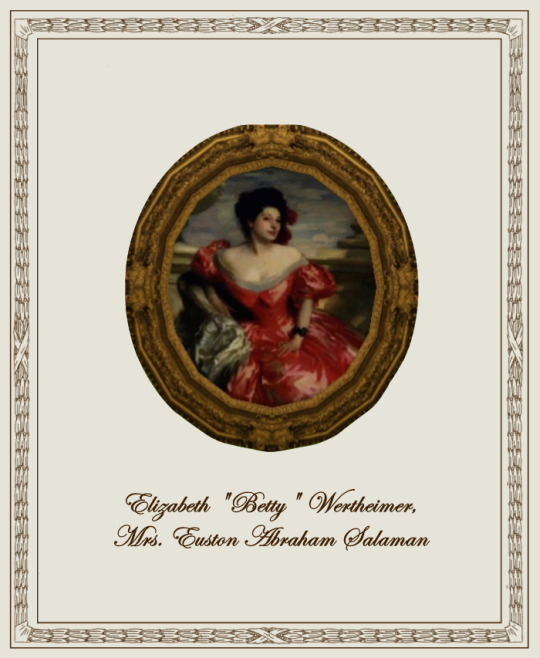
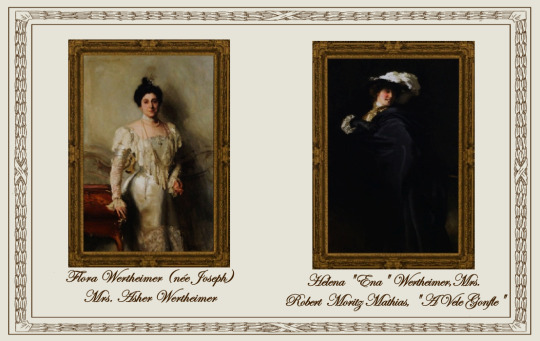



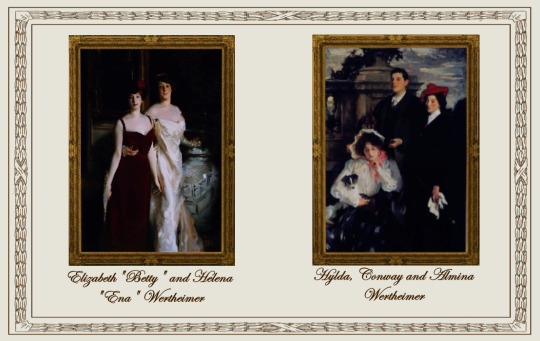
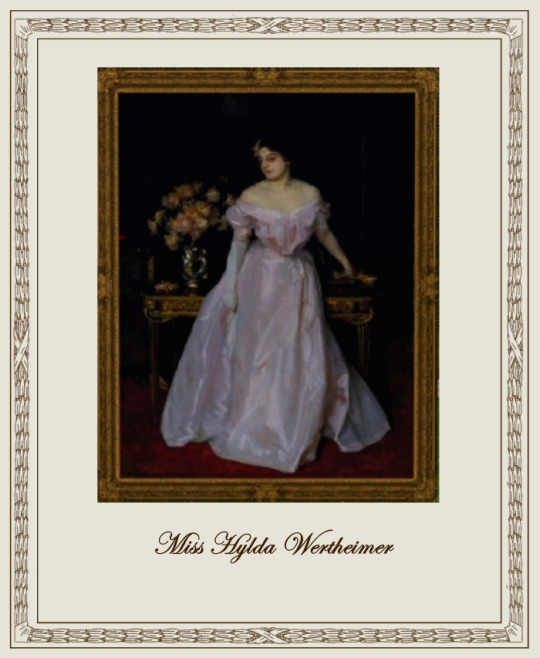

The Wertheimer Portraits
A retexture by La Comtesse Zouboff — Original Mesh by @thejim07
The Wertheimer portraits are a series of twelve portrait paintings made by John Singer Sargent of and for the British art dealer Asher Wertheimer and his family. The series amounts to Sargent's largest private commission.
The family became close friends of the artist John Singer Sargent. He often dined at their home at 8 Connaught Place, where the dining room (sometimes described as "Sargent's mess" ) was decorated with eight of the family portraits. Mr and Mrs Wertheimer commissioned Singer Sargent to paint two portraits to celebrate their 25th wedding anniversary in 1898, and ten more commissions followed in the next decade. Most of the portraits hang in the Tate Museum in London, after Wertheimer's death in 1918. The donation was an scandal, as some antisemitic comments emerged, such as that of the historian Sir Charles Oman: "these clever, but extremely repulsive, pictures should be placed in a special chamber of horrors".
The bequest and wish for the portraits to be displayed together was seen as a distasteful display of wealth with opponents claiming it was Jewish excess and asking “Is there any other gallery that has been given so many paintings?
Since the paintings would hang among royalty, clergy and historical figures, to have a room dedicated to one family deemed outside the British establishment was so controversial that it was debated in Parliament.
Nowadays, the portraits are regarded as masterpieces, and most of the antisemitic comments remained in the past, but some critics have thought that the paintings "exudes caricature-like features and projected racial stereotypes onto the sitters" although the family was perfectly happy with them (of course this wouldn't have been issue if the family belonged to catholicism or other western-predominant religion)
This set contains 12 portraits, with the original frame swatches, fully recolourable. They are of:
Elizabeth "Betty" Wertheimer, Mrs. Euston Abraham Salaman (oval shape)
Flora Wertheimer (née Joseph) Mrs. Asher Wertheimer
Helena "Ena" Wertheimer, Mrs. Robert Moritz Mathias, "A Vele Gonfle"
Madame Asher Wertheimer (née Flora Joseph) (another portrait of Flora)
Miss Almina Wertheimer in Turquerie Costume.
Mr. Alfred Wertheimer
Edward Wertheimer (unfinished)
Asher Wertheimer with his Poodle, Noble.
Elizabeth "Betty" and Helena "Ena" Wertheimer.
Hylda, Conway and Almina Wertheimer.
Miss Hylda Wertheimer.
Ruby, Ferdinand and Essie Wertheimer.
Found under decor > paintings for:
500§ (1)
1.850§ (2-3-4-5-6-7-8)
3.040§ (9-10)
3.900§ (11)
6520§ (12)
Retextured from:
"Saint Mary Magdalene" (1) found here
"The virgin of the Rosary" (2-3-4-5-6-7-8) found here
"Portrait of Mariana of Austria in Prayer" (9-10) found here
"Portrait of Maria Theresa of Austria and her Son, le Grand Dauphin" (11) found here
"Vulcan's Forge" (12) found here
Thing to know before download: The pictures are not as dark as in this post, the lighting was awful in the screenshots.
-------------------------------------------------------
CC shown here:
Walls, floor and loveseat by @thejim07
Bust, urns, fireplace, clock, vases, candelabras, pendule à cercles tournants, door and screen by @joojconverts
Armchairs by ShinoKCR (tsr)
Rug by me, found here
Sideboard, chairs, sidetables and sofa by @martassimsbookcc
Commodes by Parsimonious Sims

Drive
(Sims3Pack | Package)
(Useful tags below)
@joojconverts @ts3history @ts3historicalccfinds @deniisu-sims @katsujiiccfinds @gifappels-stuff
-------------------------------------------------------
#the sims 3#ts3#s3cc#sims 3#sims 3 cc#sims 3 download#portrait#sims 3 decor#edwardian#edwardian art#john singer sargent#wertheimer#wall decor
113 notes
·
View notes
Note
can you name all 59 women
1. Anne Bonny: a lesbian
2. Mary Read: a lesbian
3. Mary Read again: an abusive, cheating wife
4. Mary, Queen of Scots: a lesbian. (But also not a lesbian because Hester Mary MacKenzie was also her concubine.)
5. Isabella 'Bella' Baldwin: a lesbian
6. Queen Elizabeth of Parma, also known as Isabelle d'Este, was the Empress of Modena. She's one of several queens whose non-biological children were legitimized by the church.
7. Mary, Queen of France (before and during her marriage to Henry III).
8. Charlotte of Savoy: a lesbian
9. Elizabeth of York, also Elizabeth Stuart: a lesbian
10. Anna Ivanovna Demushkin: a lesbian (Ivan the Terrible's wife, as well as Mary Queen of Scots')
11. Mary, Duchess of Orleans: a lesbian
12. Mary, Duchess of Orleans again: a lesbian
13. Isabella of France: a lesbian
14. Margaret of Anjou, wife of Francis Plantagenet: a lesbian.
15. Mary 'Mary of Guise', daughter of Margaret of Anjou and Francis Plantagenet: a lesbian
16. Queen of Denmark: a lesbian (Anne's daughter, Sophie of Poland and Denmark)
17. Catherine Howard: a lesbian
18. Katherine Howard: a lesbian
19. Mary, Queen of England: a lesbian (Mary Tudor)
20. Eleanor of Austria, daughter of Ferdinand and Isabella: a lesbian (Mary Tudor's daughter, also Queen of England)
21. Mary, Queen of Bohemia: a lesbian
22. Catherine Parr: a lesbian
23. Eleanor of Austria, again: a lesbian (Mary Tudor's daughter, also queen of England)
24. Mary Tudor: a lesbian
25. Queen of Scots: a lesbian
26. Catherine Parr again: a lesbian
27. Christine de Bourgogne: a lesbian, as well as a queen of France.
28. Jane Seymour, wife of Thomas Seymour and mother of Edward Seymour. Also a lesbian.
29. Mary Stuart: a lesbian
30. Isabella of Castile: a lesbian
31. Mary Stuart again, daughter of Mary I of England: a lesbian
32. Jane Seymour again: lesbian (Edward Seymour's mom)
33. Anne Fitzwilliam, Duchess of Norfolk: a lesbian
34. Barbara Tacy, Countess of Pembroke: a lesbian
35. Mary Tudor again: a lesbian. (Mary Stuart's daughter again)
36. Jane Buckley: a lesbian
37. Catherine Parr: Elizabeth Howard, Parr's daughter, was Queen of England after her mother's death and died without an heir.
38. Margaret Cecil: a lesbian
39. Anna of Cleves: Anne Beaton, wife of Frederick V, Elector of Saxony and of James I and Mary, Queen of Scots; and her granddaughter, Lady Jane Grey, daughter of King Henry VIII and Edward Seymour.
40. Henrietta Maria Stuart: lesbian
41. Anne of Cleves: lesbian
42. Mary Queen of France: lesbian
43. Mary Queen of France again: a lesbian
44. Margaret, Countess of Lennox: lesbian
45. Elizabeth Howard: another lesbian
46.
Anne Stafford: a lesbian
47.
Jane Stafford: a lesbian
48. Jane Seymour again: a lesbian
49. Mary Stuart, Queen of Scots: lesbian
50. Princess Margaret: a lesbian
51. Anne of Cleves again, this time as a mother: Mary Tudor's daughter; Queen of England for less than a month in 1553
52.
Jane Stafford again: lesbian
53. Margaret Howard, Countess of Stafford: lesbian
54. Lady Jane Grey again: a lesbian
55. Princess Anne: a lesbian. (Princess of Portugal and the two Marianas, of Portugal and England.)
56. Elizabeth Howard again: lesbian
57. Margaret of Anjou, Lady of Woodville, wife of Ralph Neville, son of the Duke of Northumberland (Henry Tudor).
58.
159 notes
·
View notes
Note
I’m tired of people on Twitter calling King James a groomer like they’ve done research on his history🤦♀️
-✨
OK I have been holding myself back from fully saying everything I think about this. I already rambled about it (to you and once to someone else) but do you wanna hear my fully problematic opinion?
This reaction is homophobic and misogynist.
Because if THIS is the period drama that makes these people cry "groomer", if GEORGE VILLIERS the 21-year-old fully age of majority male social climber who wades into the Jacobean court and slugs it out for the top position is the person in history that's making them fret over unfree choice and power dynamics, what the fuck?
THIS is "grooming" and "csa"? THIS? While all around them in this period, you know what age the women—you know, the gender that literally completely loses an independent legal identity and has no rights and is literally referred to as part of a husband's chattels—are getting married off at? Do these people have anything to say about Henrietta Maria (15), Anne of Denmark (15), MARIANA OF AUSTRIA (14), or Mary Princess Royal (10/12)? How many period dramas have these people watched and smiled at the pretty ladies in pretty dresses, and then a young man wheedles his way into the bed of the king and THAT'S what needs discourse about?
"James was taking advantage of George's financial situation" WOMEN. HAD. NO. RIGHTS. Torture is accepted in the courts. The social structure is completely unequal all the way down and this is the understood as the will of God. There are no human rights. The Levellers (30 years from M&G) are going to be largely rejected as ridiculous. Margaret Cavendish is going to be known as "Mad Madge" (50 years from M&G) because she's a woman who has thoughts. John Locke's treatises aren't gonna be published until 70+ years from M&G. The Mansfield Judgment against slavery in England is 150+ years from M&G. And as far as the rights of minors go, R v Hopley was 245 years after M&G. (If you don't know that case don't look it up unless you want nightmares)
Yeah I know this is whataboutism but seriously. SERIOUSLY.
What kind of bizarre fucking fairytales have these people been consuming where the system of monarchy is a fun and friendly egaliatian social environment where there is no coercion and all relationships especially royal ones are certified unproblematic and 100% acceptable according to our modern standards? don't tell me i do actually know, ugh
"This relationship has coercive elements in it!" YEAH. YEAH, IT DOES. That is, we hope, one of the points of the show? The point of telling stories about relationships in the past? To examine how humans, who had emotional needs and hopes, coped under unfree oppressive conditions and were drawn into those same networks of exploitation and abuse? This weird and ugly story about a remarkable relationship and all the horrible people orbiting around it is such a fascinating case study about how real human feelings like affection, loneliness, kinship get refracted through the lens of politics and power, and the result is not pretty. But flattening it down into a tale of inhuman unfeeling Bad People would lose so much potential for exploring how bad and disgusting that SYSTEM is. If it's just Bad People Being Bad To Each Other For No Reason then the historical conditions are absolved and we can file this narrative away into a box that has nothing to do with us Good People and has nothing to say and nothing that could make us reflect about the past and future, and has no purpose other than spectacle and voyeurism and schadenfreude.
Guys, we're in a bad time here in 2024. And I cannot help but think that this kind of reckless leverage of "groomer" against specifically a gay relationship, whether intentionally or not, is part of the ongoing, intentional campaign by international regressive community to dilute the meaning of that word so that it can be deployed against real-life gay and trans people.
Even though I personally don't think it's accurate to say that James groomed George (Mary did if anything, but again, adult man who was not legally under her power), if someone wants to believe that, whatever, we're all interpeting history here. But using that word, in this particular moment, going after this particular show, reviving the bogeyman of the homosexual predator that those of us who are old enough remember being openly used against us and see it getting dusted off to be used again right now, is deeply suspect to me and I just…
Anyway name an unproblematic relationship from the period of coverture.
#james's weird stan rambles again#I'M SORRY IT'S MAKING ME MAD#wherever you live please vote#the same people slinging these words around want to bring those bad old days back#content note#tw misogyny#tw homophobia#tw grooming#tw csa#tw transphobia#tw slavery#tw history#tw politics#tw abuse#tw discourse#tw child abuse
10 notes
·
View notes
Photo
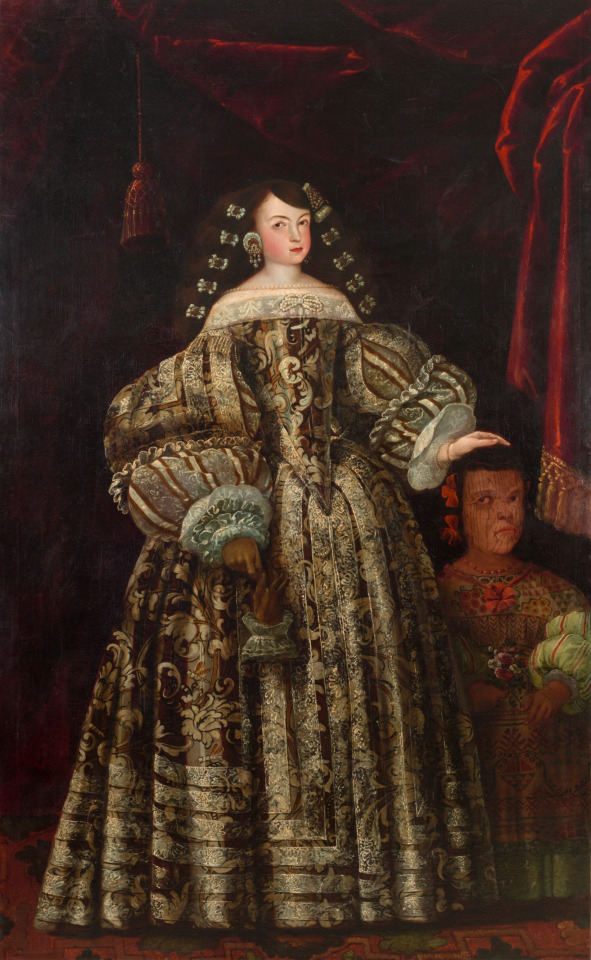
Antonio Rodríguez Beltrán, attributed (Spanish, 1636-1691)
María Luisa de Toledo e indígena, 1670
Museo Nacional del Prado
Doña María Luisa de Toledo y Carreto, Marquesa de Melgar de Fernamental, was the only daughter of Don Antonio Sebastián de Toledo Molina y Salazar, II Marquis de la Mancera and Viceroy of New Spain -between 1664 and 1673-, and of his first woman, D. Leonor de Carreto. And, therefore, she was also the granddaughter of another viceroy, in this case of Peru, D. Pedro de Toledo y Leiva, who held that position between 1639 and 1648. And also, she was the sister-in-law of a third viceroy, D. Gaspar de la Cerda y Sandoval, Count of Galve, her husband's brother, who held office in New Spain between 1688 and 1696. She was a great-great-granddaughter of the first Duke of Alba de Tormes, one of the leading noble houses in Spain, and her husband was the son of the Dukes of Pastrana and the Infantado, another of the main noble families. So, in her person, María Luisa combined an entire noble inheritance linked to some of the great Spanish aristocratic families and to the main positions in the American viceroyalties. She lived part of her childhood and adolescence in the city of Mexico, where, around 1670, she must have made this portrait of her. She returned to Spain, together with her father, in 1674.
She married Joseph de Silva, linking in this way with one of the most powerful houses in the Peninsula, which held the dukedoms of Pastrana, Infantado and Lerma among many other titles, although all of them were part of the inheritance of the eldest son, for which reason None of the consorts had, at the time of the marriage, a noble title. The title enjoyed by María Luisa and her husband, Marquises of Melgar de Fernamental, was granted as a marriage dowry by the Queen herself, Mariana of Austria, in the name of King Carlos II.
The dwarf woman who accompanies her would come from the Chichimeca area, due to the tattoos that adorn her. She has been represented wearing a long and straight huipil, which is superimposed over a green skirt or dress whose lower part protrudes from the previous one. The huipil has been arranged "a la española", that is to say, it seems to be cinched at the waist and has wide added sleeves and a bottom edge with an ova-shaped lace band. The presence of this small indigenous woman was highlighting the uniqueness and exoticism, and therefore the power and prestige of her family. The color of the complexion, the tattoo and even the type of clothing that the little woman wears reveal her connection with American places and the access that the protagonist of the canvas exhibited in relation to some networks of circulation of transoceanic goods and products.
New Spain (modern day Mexico) came to be called Mexico in 1821, after the Mexican War of Independence. The viceroyalty was dissolved and the Mexican Empire was established.
#european history#european art#spanish art#spanish history#new spain#spain#spanish#female portrait#world history#the americas#america#americas#indigenous#art#historical art#mexico#west indies#history of mexico#oil painting#1600s#royal#royaly#noble#nobility#María Luisa de Toledo e indígena#María Luisa de Toledo#indigena#indigenos#north america
61 notes
·
View notes
Text
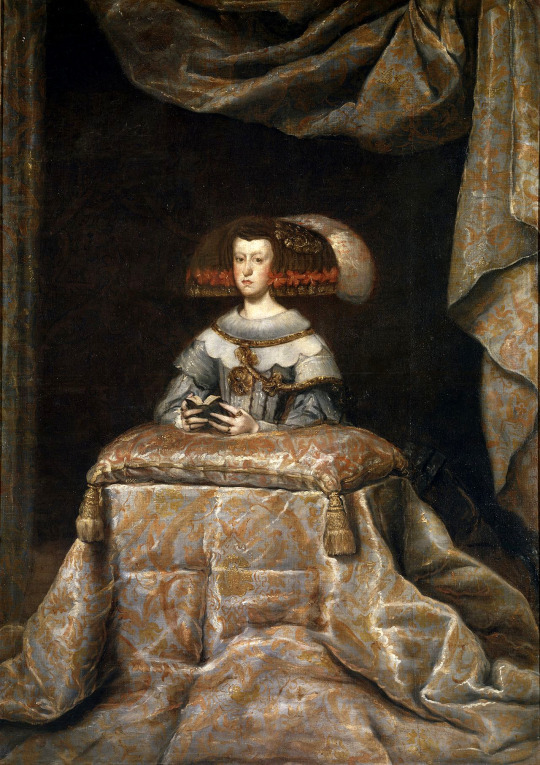
Mariana de Austria by Diego Velázquez, 1655
9 notes
·
View notes
Text
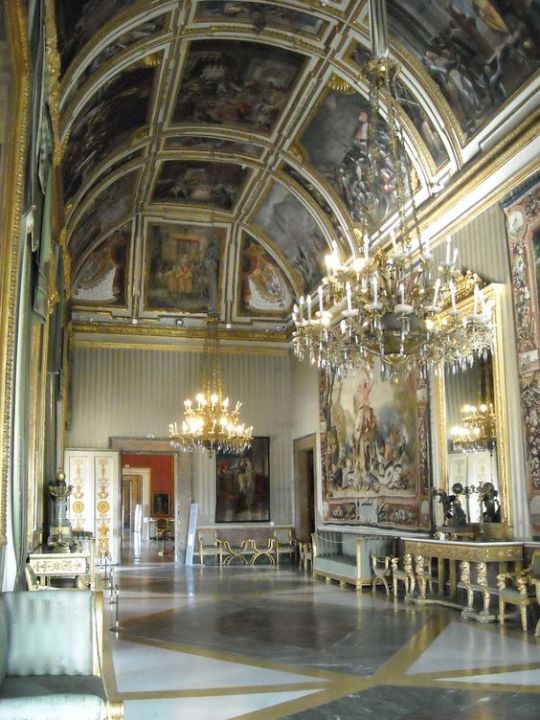
Salón de los Embajadores. Palacio Real de Nápoles, Italia.
Unía las salas de audiencias públicas con las suites privadas del Rey. Los muebles napolitanos datan de 1840, mientras que los tapices franceses son de la época de Saboya. En el techo se encuentran Esplendores de la Casa de España con varios Episodios de la Vida de Ferrante de Aragón e Historias de Mariana de Austria. Pintor: Belisario Corenzio (1560-1640) y su escuela y datan de 1620.
8 notes
·
View notes
Text
Our Contestants
1: Maria Leopoldina of Austria, First Empress of Brazil
2 Dona Maria I of Portugal
3: Dona Maria II of Portugal
4: Isabel, Princess Imperial of Brazil
5 Carlota Joaquina de Bourbon
6: João I, Duke of Bragança
7 João IV, King of Portugal
8: Afonso I, Duke of Bragança
9: Fernando I, Duke of Bragança
10: Jaime I, Duke of Bragança
11: Teodósio I, Duke of Bragança
12: Teodósio II, Duke of Bragança
13: Afonso VI of Portugal
14 Pedro II of Portugal
15: João V of Portugal
16: João VI of Portugal
17: Pedro II of Portual
18 Pedro I of Brazil/ IV of Portugal
19: Miguel I of Portugal
20: Pedro V of Portugal
21: Luís I of Portugal
22: Carlos I of Portugal
23: Manuel II of Portugal
24 Dom Pedro II of Brazil
25: Teresa Cristina, Empress of Brazil.
26: Catherine de Bragança, Queen Consort of England, Scotland, and Ireland
27: Infante Dom Manuel, Candidate for the throne of Poland
28: José I of Portugal
29: Carol II of Romania (Carlos II in Portuguese)
30: Ferdinand I of Romania
31: Infantá Antonia de Bragança, Princess Consort of Hohenzollern
32: Amélie of Leuchtenberg
33: Infanta Isabel Maria, Regent of Portugal
34: Mariana Vitória of Spain, Queen Consort of Portugal
35: Maria Francisca of Savoy (Consort to Afonso VI and Pedro II)
36: Maria Pia of Savoy (Queen-Consort to Luís I of Portugal)
6 notes
·
View notes